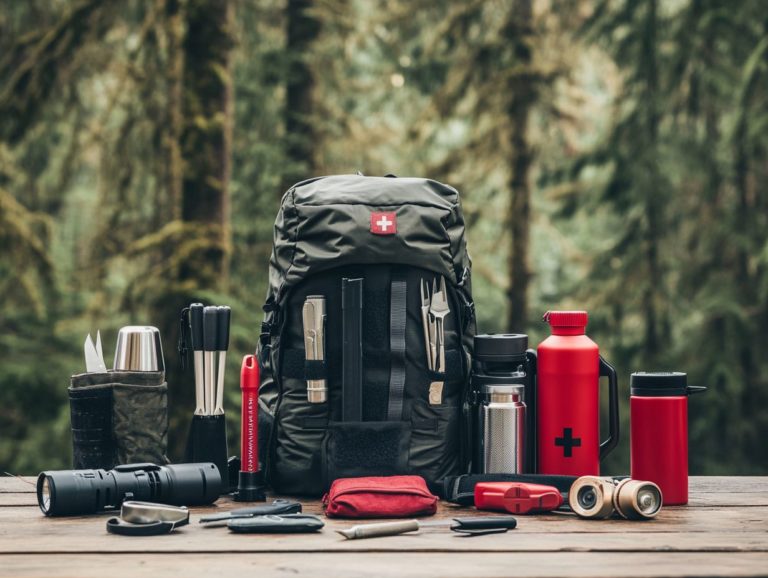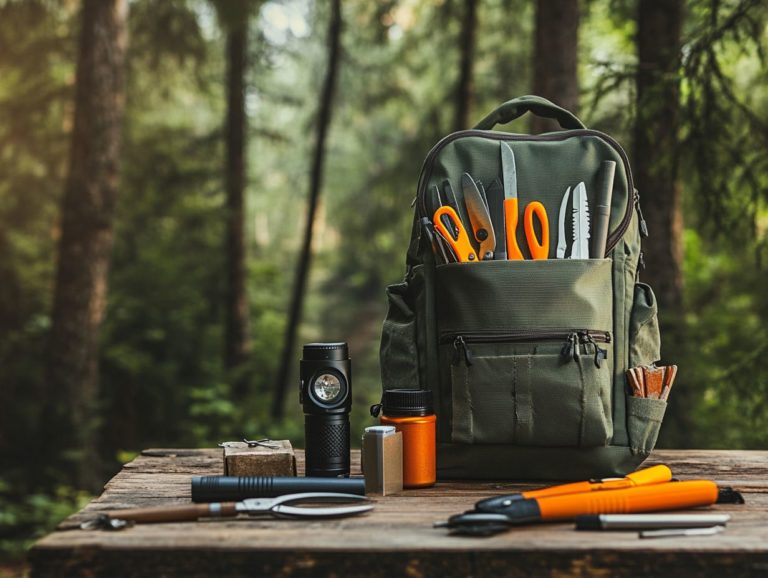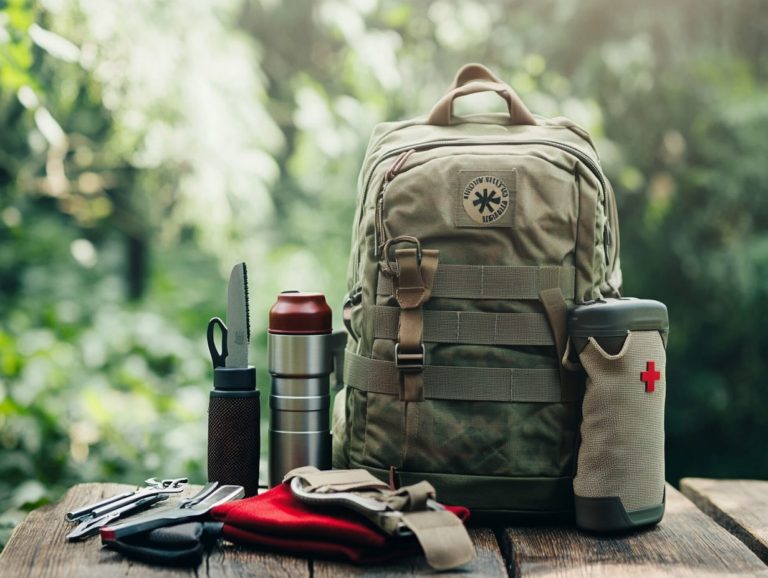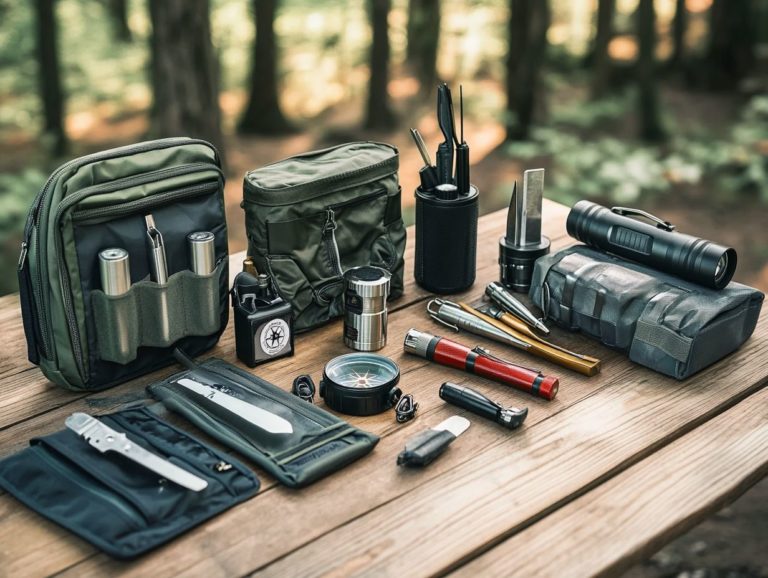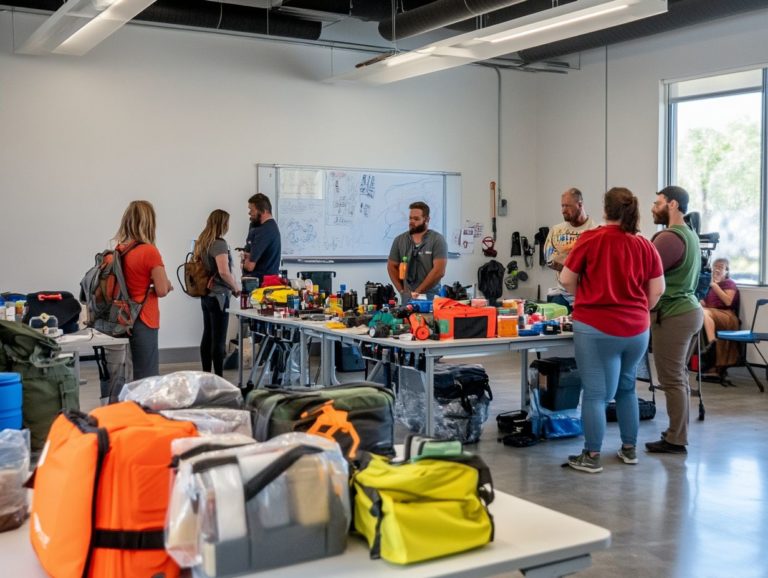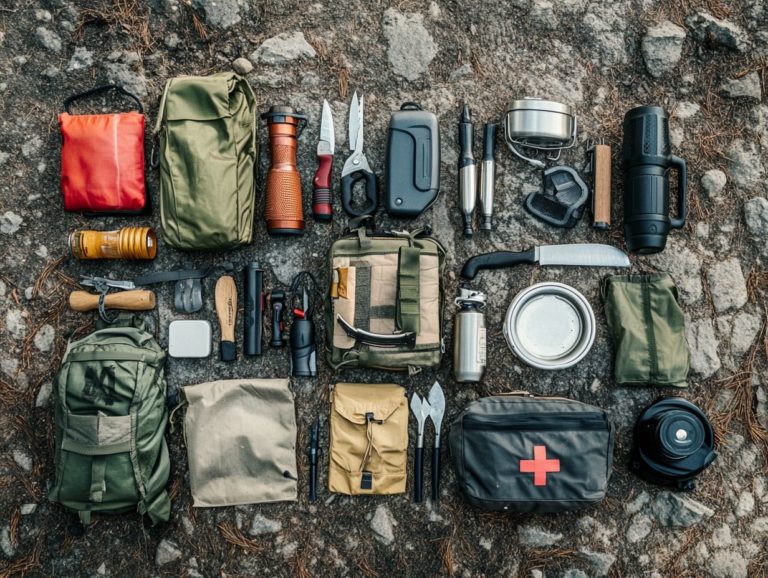5 Survival Gear Tips for First-Timers
When it comes to stepping into the great outdoors, being prepared sets the stage for a remarkable adventure. Having the right survival gear is essential.
Whether you re planning a weekend camping escape or an extended wilderness journey, understanding the basics is crucial. This article outlines five key tips for first-timers, covering fundamentals like water, shelter, packing a first aid kit, and ensuring you have dependable lighting and tools at your disposal.
Get ready for your next adventure! Equip yourself for a safe and enjoyable experience in the wild.
Contents
- Key Takeaways:
- 1. Start with the Basics: Water and Shelter
- 2. Pack a First Aid Kit
- 3. Bring a Reliable Source of Light
- 4. Don’t Forget to Bring a Knife
- 5. Have a Plan for Food and Cooking
- How to Choose the Right Survival Gear for Your Needs?
- Frequently Asked Questions
- What are the top 5 survival gear tips for first-timers?
- Why is a multi-tool necessary in survival situations?
- What should I look for in a reliable water filter?
- Do I really need a first aid kit for a short outdoor trip?
- Why is it important to pack extra layers for a survival trip?
- Is a navigation tool really necessary for a short outdoor trip?
Key Takeaways:
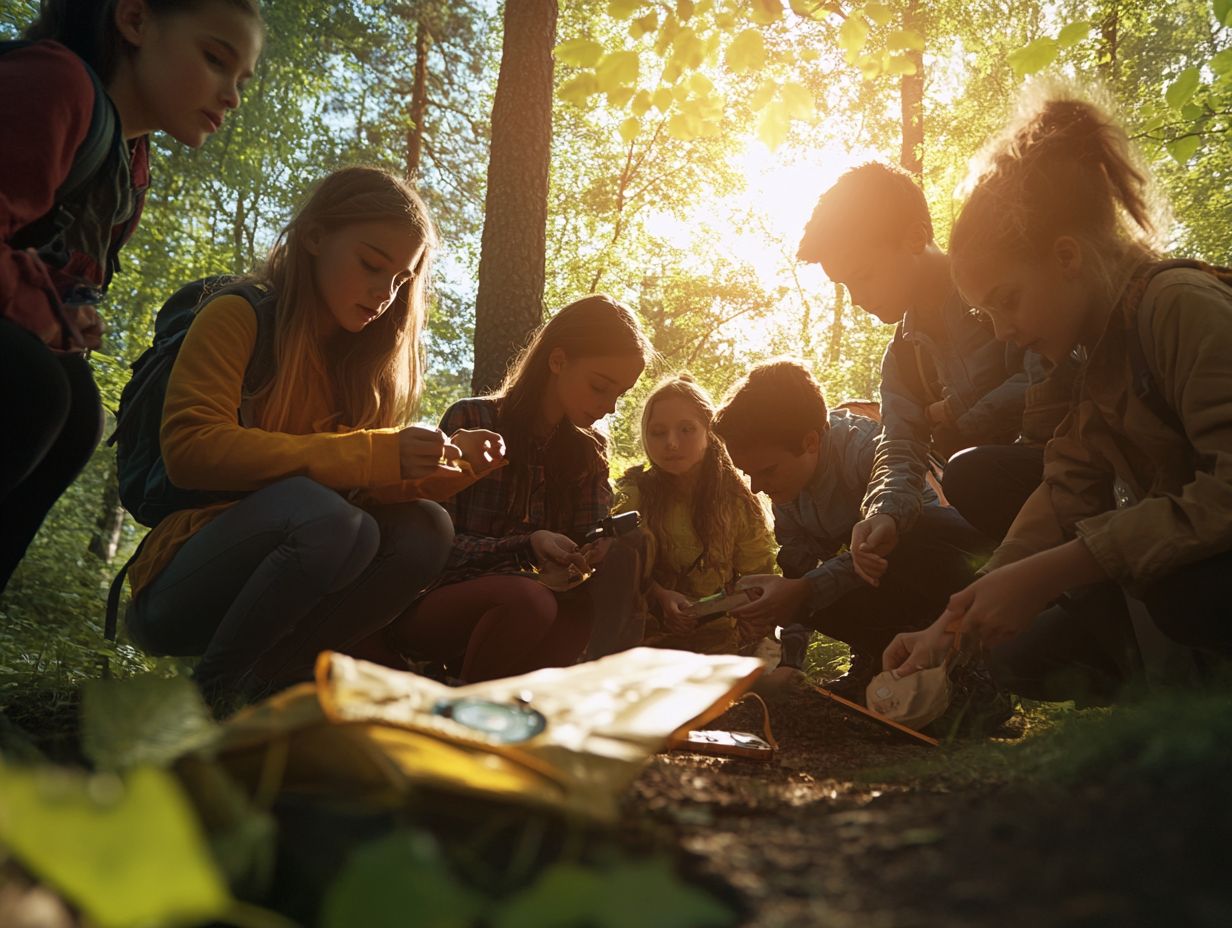
- Always prioritize water and shelter when packing survival gear as they are essential for survival.
- A first aid kit is a must-have in any survival situation to treat injuries and illnesses.
- Bring a reliable source of light such as a flashlight or headlamp to navigate in the dark.
1. Start with the Basics: Water and Shelter
Understanding the essentials of wilderness survival, particularly the significance of water and shelter, is vital for anyone venturing into the wild. Water is necessary for hydration and plays a crucial role in various survival techniques, including purification methods like boiling or using tablets.
Crafting a waterproof shelter can shield you from the elements and conserve energy, significantly enhancing your chances of survival. Master these fundamentals before you learn about more advanced survival skills.
To refine your ability to locate water sources, observe wildlife behavior or track vegetation patterns. Animals and specific plants often indicate nearby water.
Once you ve found a water source, purification becomes paramount. Utilizing Katadyn tablets is an effective way to eradicate harmful pathogens. Magnesium blocks can help remove impurities from water, ensuring it is safe for consumption.
For shelter, lightweight plastic sheeting can be transformed into a reliable barrier against rain and wind. Combined with natural materials, it can create a sturdy refuge.
Keeping an emergency bivvy on hand provides essential warmth and protection in unpredictable weather. It serves as an immediate safeguard until you can establish a more suitable shelter.
2. Pack a First Aid Kit
A well-stocked first aid kit is a cornerstone of your survival gear. It can be the deciding factor between life and death in emergency situations.
When assembling your first aid kit, incorporate key medical supplies, such as a diverse array of bandages and antiseptic wipes. These items are your first line of defense for effectively cleaning and dressing wounds.
Don t underestimate the power of pain relievers, like ibuprofen or acetaminophen; they can relieve discomfort from injuries or illnesses. Tailor your supplies to fit specific wilderness survival scenarios.
If you re venturing through dense forests, include splints for potential sprains or fractures. Consider the unique risks of your environment, such as insect bites or allergic reactions, ensuring that your kit remains comprehensive and ready for whatever challenges nature presents.
3. Bring a Reliable Source of Light
In wilderness survival, carrying a reliable light source is crucial for navigating through challenging situations, especially at night. You’ll find various lighting options tailored to different needs.
Flashlights provide focused beams for precision, while headlamps offer hands-free convenience for multitasking. If you’re looking for an eco-friendly alternative, solar-powered lanterns are perfect for extended nature retreats.
It’s smart to remember that extra batteries can be the difference between safety and getting lost in the dark. Lighting serves a dual purpose; bright signals can effectively attract rescuers during emergencies, making it an essential tool for visibility and survival communication.
4. Don’t Forget to Bring a Knife
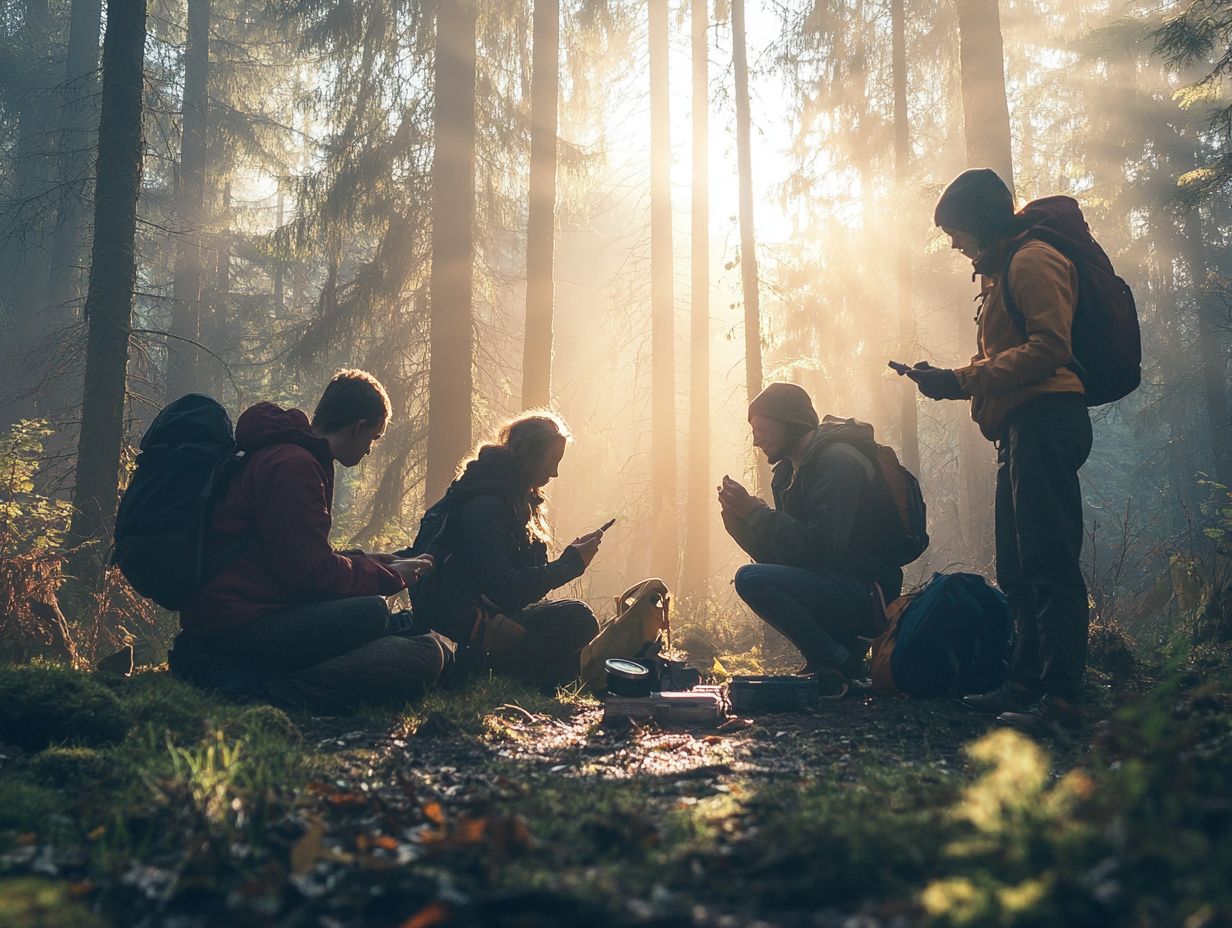
A dependable knife is one of the most essential tools in your survival gear, ready to serve multiple purposes in various situations.
With its remarkable versatility, a survival knife can effortlessly handle tasks ranging from cutting rope and preparing food to building a waterproof shelter when the elements turn unforgiving. Fixed blade knives, revered for their strength and durability, excel at heavy-duty tasks and can endure even the harshest conditions.
On the other hand, folding knives offer unmatched portability and ease of carry, making them ideal for everyday use while still delivering impressive functionality. No matter which type you choose, proper maintenance is paramount. Keeping your blades sharp and free of rust guarantees reliability in critical moments, elevating a simple knife into a vital lifeline in wilderness survival scenarios.
5. Have a Plan for Food and Cooking
A solid food and cooking plan is crucial for wilderness survival. Understanding your survival priorities ensures your nutritional needs are effectively met.
Opting for lightweight and easy-to-prepare emergency food rations can significantly bolster your survival strategy in the wild. Consider choices like dehydrated meals, energy bars, and vacuum-sealed foods; these options are not only light but also offer substantial nutrition with minimal cooking effort.
When it comes time to cook, techniques such as boiling or using a small camp stove can help you prepare meals with limited resources. Developing skills in finding safe plants to eat and basic hunting methods can enhance your food supplies, making survival much more achievable.
Familiarizing yourself with the local flora and fauna is essential, ensuring your choices are both safe and sustainable.
How to Choose the Right Survival Gear for Your Needs?
Choosing the right survival gear tailored to your specific needs is a crucial step in wilderness survival preparation, ensuring you’re well-equipped for a variety of scenarios.
As you embark on your outdoor adventure, you must consider several factors, including the environment you ll be navigating, the duration of your stay, and your personal skill set in using the gear at your disposal. Whether you’re trekking through dense forests, traversing arid deserts, or exploring icy terrains, your kit’s requirements will vary significantly.
For longer excursions, prioritizing lightweight items can greatly enhance your mobility and comfort. Your must-have gear includes:
- A reliable knife
- Water purification tablets
- A compact first-aid kit
- Emergency blankets
- Fire-starting tools
Each item is thoughtfully selected to bolster your chances of effective survival, ensuring you re equipped to handle whatever nature throws your way.
What Are the Essential Items for Survival Gear?
Understanding the essentials of survival gear is crucial for your success in the wilderness. These tools can help you navigate a variety of challenges.
When faced with unpredictable environments, you must be thoroughly prepared with a comprehensive kit that includes vital medical supplies to treat injuries and swiftly prevent infections. Water purification tablets are critical; they turn contaminated water into a safe drinking source, which is essential for maintaining your energy and hydration.
A reliable fire starter not only offers warmth but also allows you to cook and signal for help, enhancing your visibility in emergencies. Having signaling devices, like mirrors or whistles, significantly boosts your chances of being found by rescuers.
Each of these items is pivotal in ensuring your safety and improving your odds of survival in the wild.
Prepare wisely, and you ll thrive in the wild!
How Can You Pack Light but Efficiently?
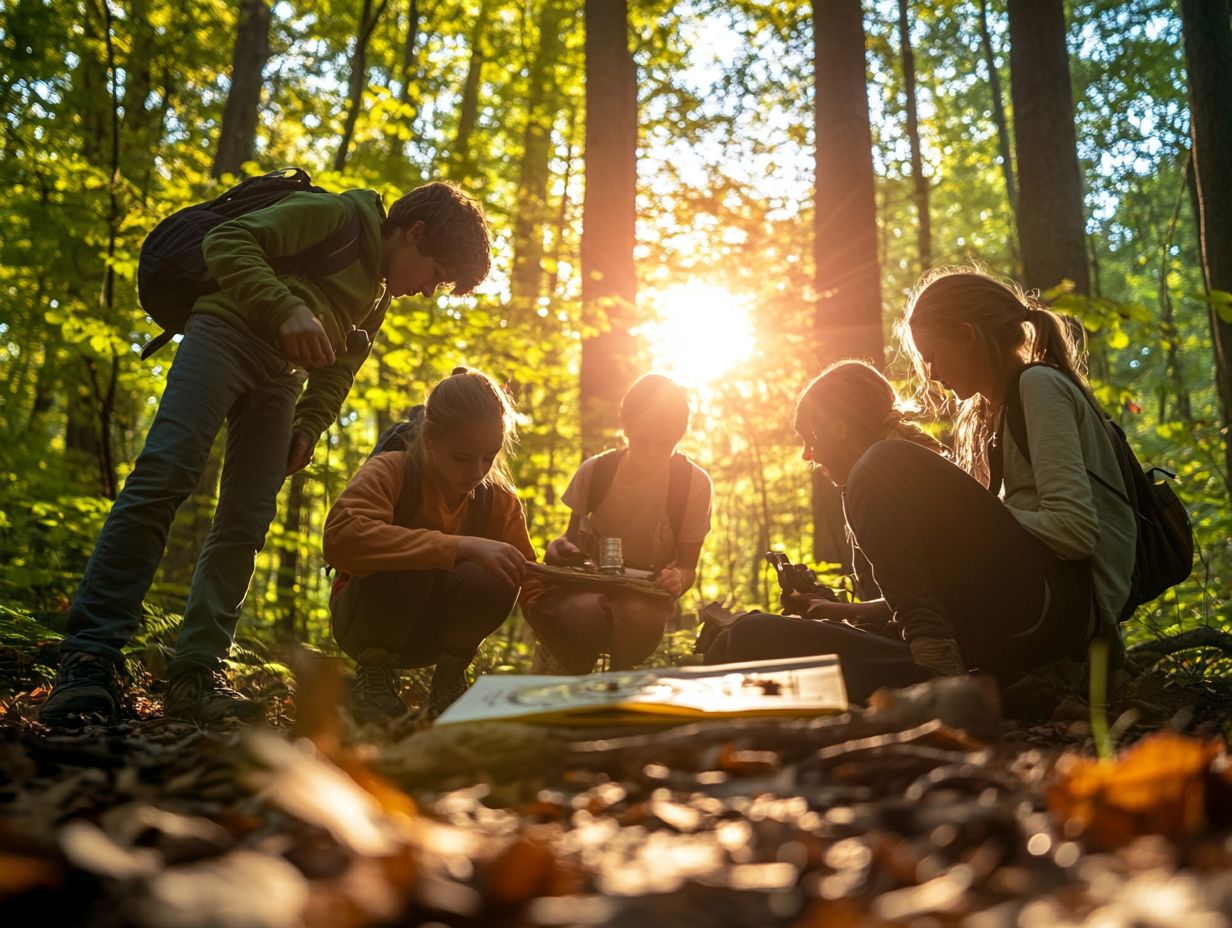
Packing light yet efficiently is essential for wilderness survival. It allows you to carry only the most crucial outdoor gear without feeling weighed down.
Focus on selecting lightweight items designed for outdoor adventures. Materials that are strong yet light can help reduce weight while maintaining durability.
Choose versatile tools that perform multiple functions. For example, a multi-tool can serve as a knife, screwdriver, and bottle opener, reducing bulk while enhancing your journey.
By prioritizing compact options, you can streamline your packing strategy and improve your overall experience.
What Are the Common Mistakes to Avoid When Packing Survival Gear?
Avoiding common mistakes when packing survival gear can greatly enhance your readiness for unexpected wilderness situations.
Many outdoor enthusiasts find themselves overwhelmed by the many options available, leading to frequent pitfalls such as overpacking. This can weigh you down and hinder your mobility.
It’s easy to overlook essential items like a reliable water filtration system or a first aid kit both crucial in emergencies.
Some may even pack unnecessary gear, like bulky stoves, complicating their pack without providing significant value. By assessing your needs and considering the specific environment you re venturing into, you can prioritize essential tools and remain agile.
What Are Some Tips for Maintaining and Replacing Survival Gear?
Regular maintenance and timely replacement of your survival gear are essential for ensuring that your equipment is ready when you need it most.
To accomplish this, establish a comprehensive checklist that includes specific tasks tailored to your gear. For example, regularly sharpening your knives boosts their efficiency and ensures a safer cutting experience.
You should also conduct periodic checks of your medical supplies to confirm that bandages, antiseptics, and medications are within their expiration dates and adequately stocked.
If you spot signs of wear or damage like frayed straps or rust on tools replace those items immediately. This proactive approach can significantly enhance your preparedness.
How Can You Practice Using Your Survival Gear Before an Emergency?
Practicing with your survival gear before an emergency is crucial for survival training. It ensures that you’re well-acquainted with how each item functions.
Engaging in drills that mimic real-life scenarios can significantly boost your confidence in using tools like fire starters and water filters.
Create controlled environments where you can repeatedly practice essential tasks, such as lighting a fire under various weather conditions or filtering water from different sources.
These exercises help build muscle memory and allow you to troubleshoot any issues that might arise during an actual survival situation. By consistently incorporating these simulations, you refine your skills, making you more capable and prepared for true wilderness conditions.
Frequently Asked Questions
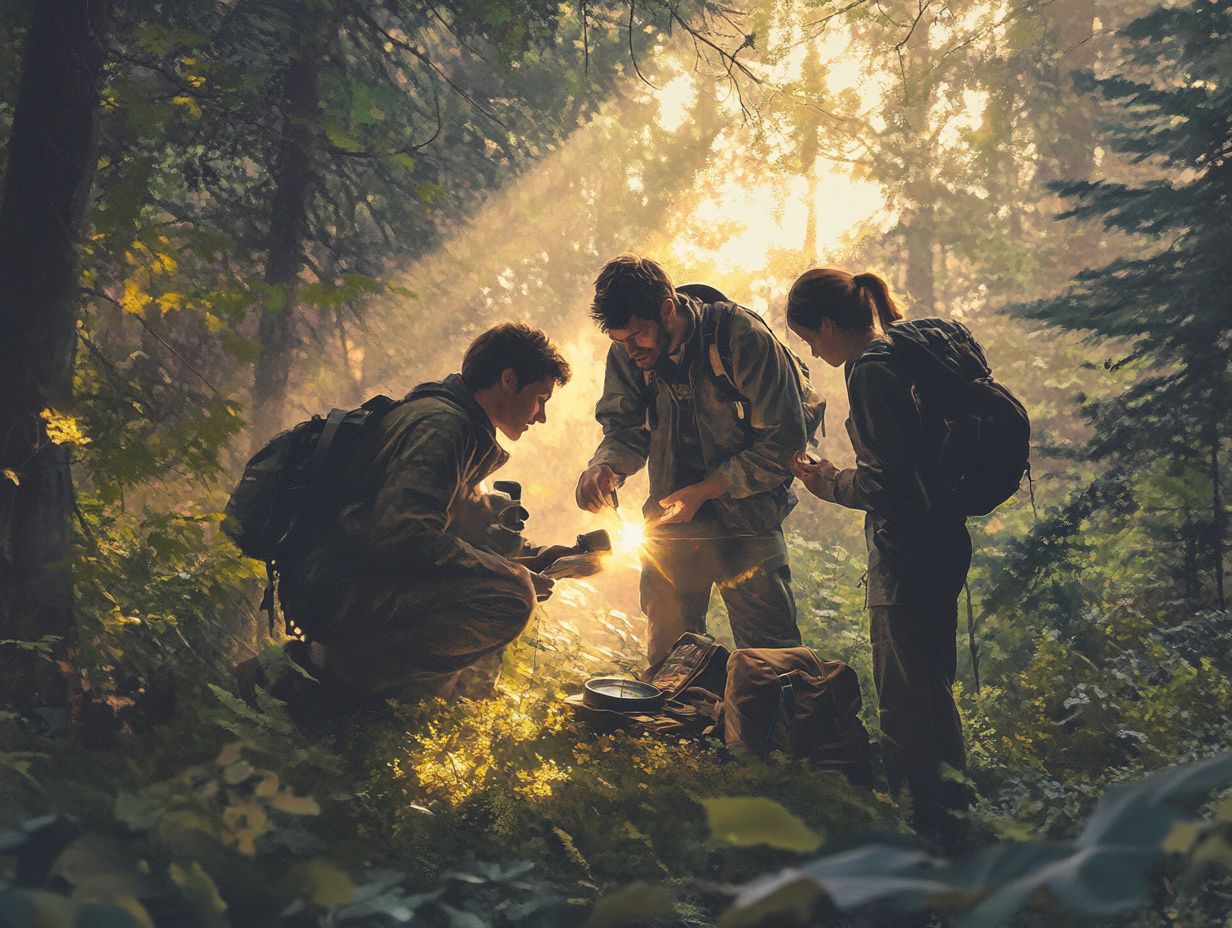
What are the top 5 survival gear tips for first-timers?
- Pack a multi-tool! This handy device can handle various tasks, helping you start a fire or fix equipment.
- Bring a reliable water filter! Staying hydrated is vital, and a portable filter ensures safe drinking water.
- Don’t forget a first aid kit! This kit can treat minor injuries and prevent them from worsening.
- Pack extra layers. Weather can change fast, and extra clothing will keep you warm and protected.
- Include a navigation tool. A map and compass or GPS device helps you find your way back safely.
Why is a multi-tool necessary in survival situations?
A multi-tool is vital. It cuts, saws, and pries, making it valuable in survival situations.
What should I look for in a reliable water filter?
Choose a water filter that removes bacteria, viruses, and tiny organisms that can make you sick. It should be lightweight and easy to use.
Do I really need a first aid kit for a short outdoor trip?
Yes! Always be prepared for accidents, no matter how short the trip. A first aid kit can help treat minor injuries.
Why is it important to pack extra layers for a survival trip?
Weather can be unpredictable. Extra clothing helps keep you warm and protects you from the elements.
Yes! Having a way to navigate is crucial. A map and compass or GPS can help you avoid getting lost.

